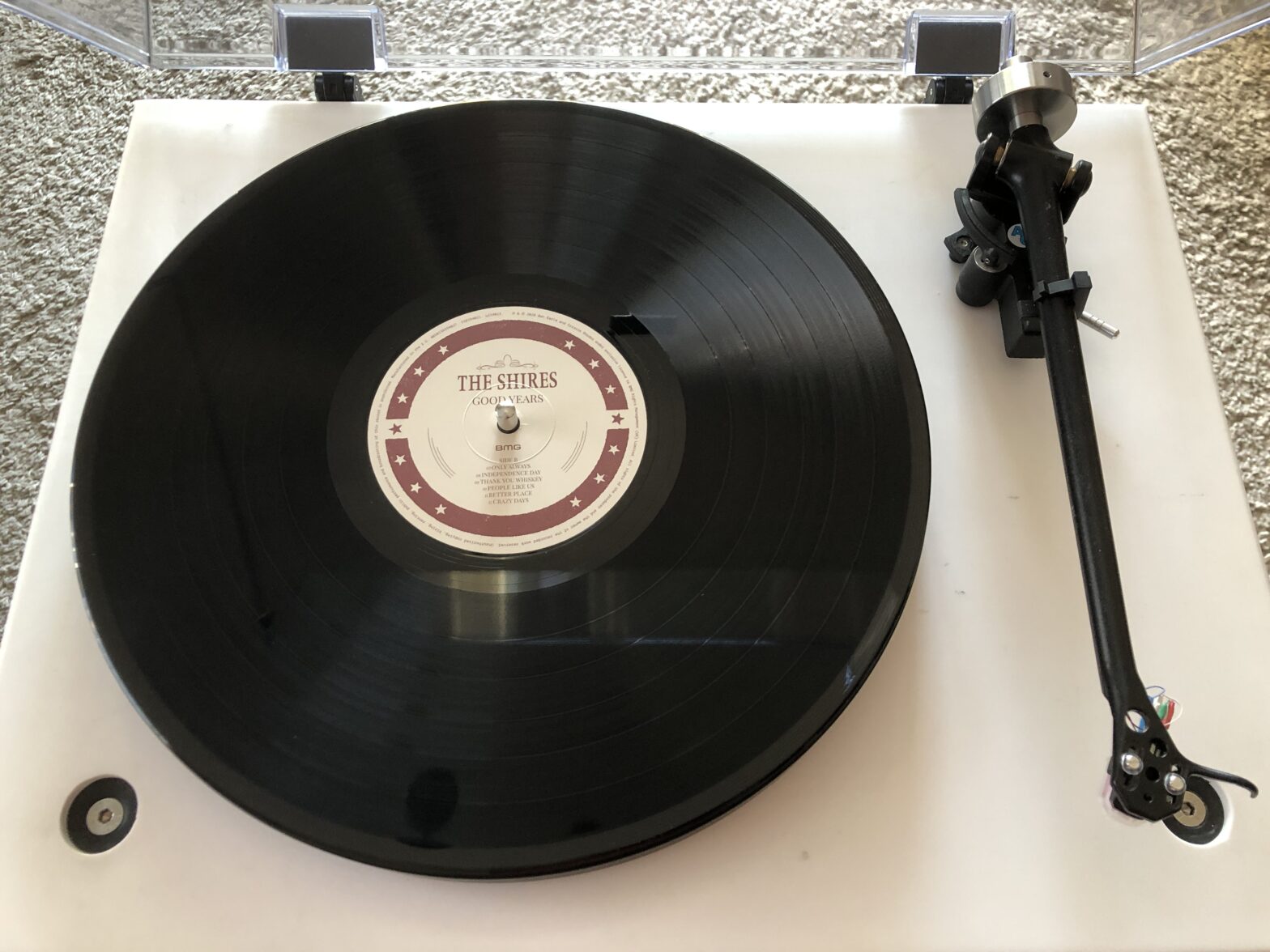Project Glacier (named after the colour) is a high end turntable featuring some noteworthy and unique materials. It was intended to push the boundaries of what I am able to engineer with the tools and the means I have at my disposal.
The first of the materials can be seen in the plinth. The three-layer plinth is machined in a solid surface material, made to a formula optimised for vibration dissipation and low energy absorption. Two sheets of material are bonded together to produce each layer. In essence while it is certainly heavy, it has many of the qualities of a low mass turntable and gives the best of both worlds.
The layers of the plinth are isolated using a polymer that has outstanding isolation properties while also being dense and strong, so the deflection as a result of the weight of the plinth layers is minimal. The plinth is held together by three bolts which pass through the isolators and are themselves isolated from the plinth.
The bolts pass directly into the feet, which are machined in polished aluminium with nylon bushings. The nylon bushings dampen any resonance that the feet may contribute while also providing a means to level the turntable.
Second is the VHL bearing sleeve. VHL (Vesconite Hilube) is a thermopolymer which incorporates an internal lubricant, resulting in an exceptionally low friction coefficient. VHL also has excellent dimensional stability, low wear rates (millions of hours in this use case) and a high load-bearing capacity. It has been shown to offer up to ten times the life of equivalent bronze bearing liners. The bearing is lubricated with a quality fully synthetic motor oil.
The sub platter is machined in a polished 6061-T6 aluminium with a 316L low carbon stainless steel spindle. The sub platter rides on a Zirconia bearing for ultra smooth and quiet operation. It will spin for several minutes without any assistance from the motor. EPDM (Ethylene Propylene Diene Monomers) synthetic polymer rings are set into the sub platter hub to grip the platter, providing a level of isolation between the platter and bearing and ensuring the platter is absolutely stable during rotation.
The triple pulley drives the sub platter via three Silicone belts formed in pure silicone with no additives. The pulley itself is secured to the motor shaft via a butyl rubber insert and further silicone sealant for the best possible vibration damping and torque transfer.
The motor is a 24V Premotec 39823 as used in Rega’s turntables. Mechanically it has been modified with an adjustable thrust bearing. The motor shaft rides on a stainless steel ball machined to a fine surface tolerance, adjustable from beneath by a small screw. This enables a degree of shaft height adjustment but also allows the rotor to be positioned within the motor coils to achieve optimal performance. For simplicity I opted to use Rega’s controller circuit and power supply as it is already a well thought out and very well executed means of controlling the motor.
The motor is driven by a circuit permitting adjustment of the phase angle to minimise vibration to the point where the vibration is almost imperceptible when holding the motor in your hand. The phase angle is adjustable for both 33 and 45RPM frequencies. The circuit is driven in turn by the Neo power supply which generates a clean and precise AC waveform at 50Hz (for 33.3RPM) and 67.5Hz (for 45RPM). The PSU is further optimised to the motor by tuning the voltage to achieve maximum torque with minimum vibration. The result is a motor drive that runs cool and almost silently with exceptional speed accuracy and plenty of torque.
The platter is machined in Acetal resin which is an ideal match to the physical properties of vinyl itself. A label recess allows the vinyl sit directly on the platter with no mats of any kind. The Acetal platter is virtually free from resonance and impervious to static. The platter mass is concentrated around the periphery, thereby creating a flywheel effect as the platter spins and improving speed stability. Once the motor gets the deck up to speed there is very little load on the motor at all, as the combination of the bearing and platter make for an extraordinarily smooth and silent drive system.
The arm uses Rega’s famous cast aluminium single-piece tapered arm tube. It’s actually based on a Rega RB202 though with extensive modifications. These include 99.9% oxygen free copper wiring internally and a low capacitance OFC external cable with separate ground.
The arm bearings were replaced with the finest bearings respected tonearm manufacturer Audio Origami had to offer, and the counterweight and rear weight stub were replaced with a stainless steel version which gives much better performance and a nicer appearance. The arm was foam filled to control any adverse resonance, and a brass earth pin was also fitted. The difference between this arm and the Rega on which it is based is night and day; this arm is really quite astounding sonically.
The result is a turntable able to lay claim to high-end status with a sound to match. I’ve learned a huge amount about the mechanics of vinyl replay in the last decade or so and this turntable is the culmination of my knowledge so far. Rega’s Roy Gandy often states that there is no such thing as a perfect turntable, as vinyl replay always involves a level of compromise. The perfect turntable balances those compromises, which is a philosophy I have tried to apply here.













































Share Your Thoughts